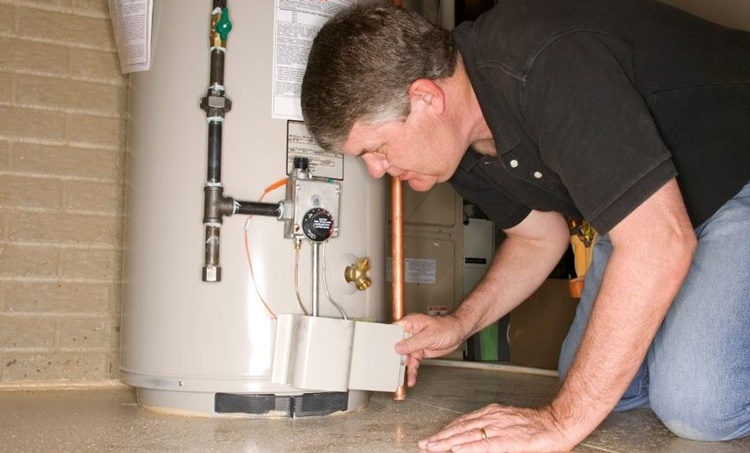Top Methods to Care for Your Home's Hot Water System Effectively
Top Methods to Care for Your Home's Hot Water System Effectively
Blog Article
Do you find yourself on the lookout for answers about What Kind of Maintenance Do Water Heaters Need??

Warm water is crucial for day-to-day convenience, whether it's for a revitalizing shower or cleaning meals. To guarantee your warm water system runs successfully and lasts much longer, normal maintenance is key. This short article supplies functional pointers and insights on exactly how to preserve your home's warm water system to prevent interruptions and costly repair work.
Introduction
Preserving your home's hot water system might seem difficult, but with a few easy steps, you can ensure it operates smoothly for years to come. This overview covers whatever from recognizing your warm water system to do it yourself maintenance ideas and understanding when to call specialist aid.
Relevance of Keeping Your Hot Water System
Normal upkeep not just prolongs the lifespan of your hot water system but also ensures it runs successfully. Disregarding upkeep can lead to lowered effectiveness, higher power expenses, and even early failure of the system.
Indicators Your Hot Water System Demands Upkeep
Understanding when your hot water system requires attention can protect against major problems. Keep an eye out for indications such as inconsistent water temperature level, unusual sounds from the heater, or corroded water.
Flushing the Hot Water Heater
Flushing your hot water heater eliminates debris accumulation, boosting efficiency and extending its life.
Checking and Changing Anode Rods
Anode rods stop corrosion inside the storage tank. Inspecting and changing them when worn is crucial.
Complicated Concerns Needing Specialist Help
Instances include major leaks, electric troubles, or if your water heater is continually underperforming.
Regular Professional Maintenance Conveniences
Professional maintenance can include complete inspections, tune-ups, and making sure compliance with safety requirements.
Inspecting and Changing Temperature Level Settings
Readjusting the temperature setups guarantees optimum performance and safety and security.
DIY Tips for Upkeep
You can execute several upkeep tasks on your own to keep your hot water system in leading condition.
Checking for Leaks
Regularly examine pipelines and connections for leakages, as these can bring about water damage and greater bills.
Understanding Your Warm Water System
Prior to diving into upkeep tasks, it's valuable to recognize the basic elements of your warm water system. Usually, this consists of the water heater itself, pipes, anode rods, and temperature level controls.
Month-to-month Maintenance Tasks
Regular monthly checks can aid catch minor concerns prior to they rise.
Testing Pressure Alleviation Valves
Examining the stress relief valve guarantees it works correctly and avoids extreme pressure accumulation.
Protecting Pipelines
Protecting warm water pipelines decreases warm loss and can save energy.
When to Call a Professional
While DIY maintenance is helpful, some concerns call for expert experience.
Final thought
Routine upkeep of your home's warm water system is necessary for performance, durability, and cost savings. By complying with these tips and recognizing when to look for professional aid, you can guarantee a reliable supply of warm water without unforeseen disturbances.
How to Maintain an Instant Hot Water Heater
Before tinkering with your hot water heater, make sure that it’s not powered on. You also have to turn off the main circuit breaker and shut off the main gas line to prevent accidents. Also turn off the water valves connected to your unit to prevent water from flowing into and out of the appliance. 2. When you’re done, you have to detach the purge valves’ caps. These look like the letter “T†and are situated on either side of the water valves. Doing so will release any pressure that has accumulated inside the valves while at the same time avoid hot water from shooting out and burning your skin. 3. When the purge valves’ caps are removed, you have to connect your hosing lines to the valves. Your unit should have come with three hoses but if it didn’t, you can purchase these things from any hardware or home repair shops. You can also get them from retail stores that sell water heating systems. Read the user’s manual and follow it to complete this task properly. When the hosing lines are connected, open the purge port’s valves. 4. You should never use harsh chemical cleaners or solutions when cleaning your unit. Make use of white vinegar instead. It should be undiluted and you’ll probably use about 2 gallons. 5. Now flush your water heater. This task should probably take about 40 minutes. We can’t give you specific directions for this because the procedure is carried out depending on the type, model and brand of your heater. With that being said, refer to the user’s manual. 6. When you’re done draining the unit, you have to turn off the purge port valves again. Remove the hosing lines that you earlier installed on each of the water valves. Put the valve caps (purge port) back in their respective places and be very careful so as not to damage the rubber discs that are found inside these caps. 7. Now that everything’s back in place, check your user’s manual again to find out how to reactivate your water heating system. 8. Once it is working, turn one of your hot water faucets on just to let air pass through the heater’s water supply pipes. Leave the tap on until water flows smoothly out of it. https://www.orrplumbing.com/blog/2014/september/how-to-maintain-an-instant-hot-water-heater/
:max_bytes(150000):strip_icc()/reasons-gas-water-heater-not-working-5212987-hero-fe6b82a59053421c88b7d13ea311d3c5.jpg)
I am very focused on What Kind of Maintenance Do Water Heaters Need? and I hope you enjoyed the new blog posting. For those who enjoyed reading our blog post if you please do not forget to share it. I love your readership.
Book Now Report this page